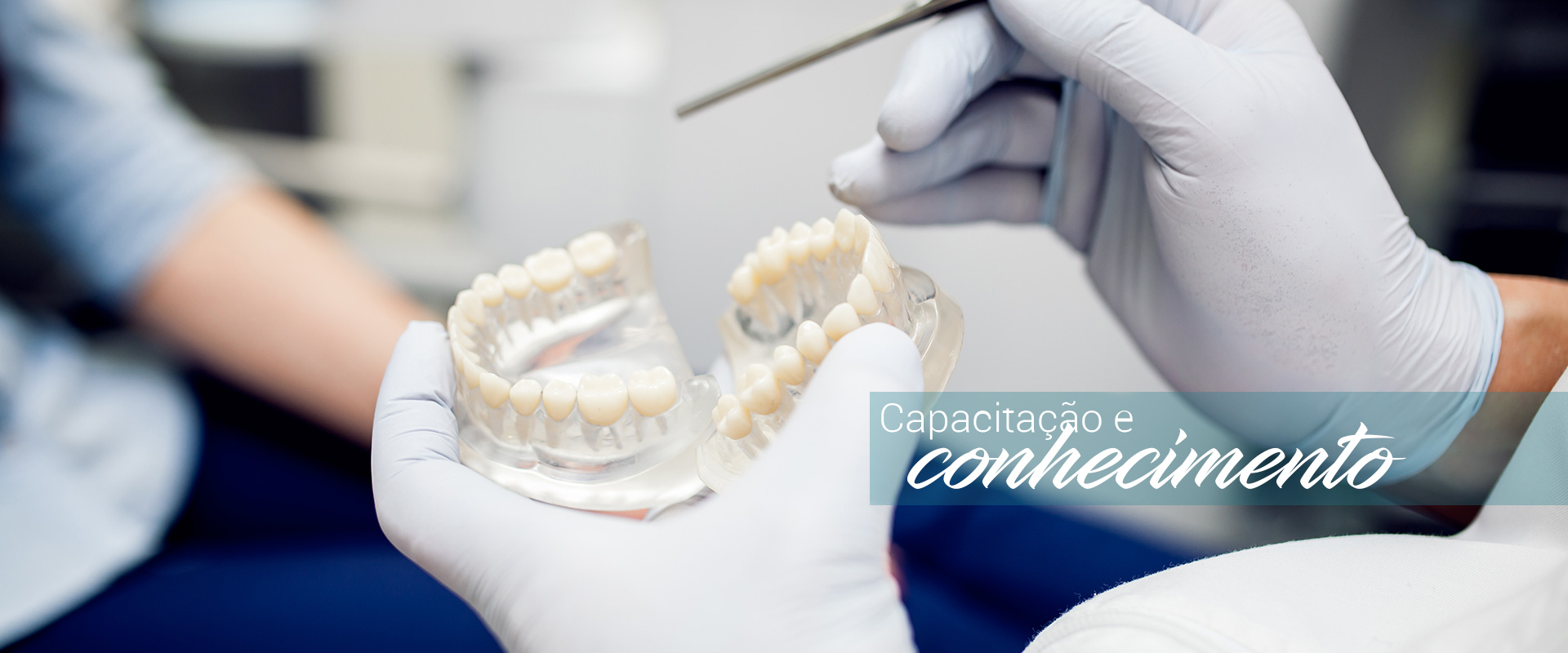
Orthodontics and Orthopedics
It is the area of dentistry that studies the growth and development of the face, and its deviations of normality, preventing, intercepting and correcting the bad occlusions, for the correct chewing. With the restoration of the dental occlusion (correct fitting of the upper and lower teeth), some problems of breathing, swallowing, speaking and in the mandibular articular time are avoided.
Some patients present complex problems requiring restorative, endodontic, prosthetic and/or periodontal therapies, together with orthodontic practice. Cases of prone or extruídos teeth due to the early loss of their neighbors or antagonists, teeth included partially or totally, as well as rotated teeth, can seriously compromise the clinical work. For the solution of these problems, the orthodontist employs total fixed appliances (glued across the arc) or partials (installed in only a few teeth), to carry out small dental movements and with this, allow the success of the integrated treatment.
The orthodontic treatment done in conjunction with the Rehabilitater is of great value in the establishment of more appropriate dental positions, in the maintenance or opening of the space for the placement of pröteses and implants or even in the closing of small spaces.
The appliances can be divided into two groups: fixed and removable. The fixed appliances are attached to the teeth by means of a adhesive substance or cement. They are composed of bráquetes (metallic, plastic or ceramic), tubes and rings, which support the metallic arc responsible for the dental movement. It allows for greater movement of the teeth and independent of the patient's collaboration. There are several types of apparatus, with origin in different orthodontic techniques however, the fixed appliances have in common the ability to fully control the dental movement, allowing, although small details are made artistically By the orthodontist. Mobile appliances are also known as functional appliances; They are embedded in the mouth and can be removed by the patient or by the orthodontist, and depend on the patient's collaboration; They may be orthodontics, which perform small dental, or orthopedic movements, used in skeletal corrections (bone) and harmonizing muscular function.
Aesthetic appliances are ceramics or sapphire, and transparent aligners. Nowadays with the advent of new materials, such as the Autoalloy, nickel-titanium wire, activated term and new techniques, the treatment time has become much reduced and has become less traumatic and more aesthetic.
The transparent aligners are indicated for all ages and provide comfort and discretion during orthodontic treatment, are almost imperceptible, fast and precise movement, without the use of wires and brackets, which ensures a smooth alignment And with total comfort valuing its aesthetic and spontaneity. They are made of platelets transparent acetate (a type of plastic), similar to dental whitening plates.During the growth phase many poorly occlusions are more easily treated; It is important that the parents take the children to the orthodontist for a first consultation around seven years, because at this age, in addition to the first permanent molars and the incisors already have erupcionado, the bones of the face have already grown sufficiently to allow A better assessment. Wait until all permanent teeth have ruptured or the child's growth has ceased, can make treatment more complicated. Some signs or habits that indicate the need for a visit to the orthodontist such as, early or late loss of milk teeth, difficulty in chewing or biting, mouth breath, finger-sucking habit, crowded or poorly positioned teeth, sounds and noises in Joint close to the ear, bite the cheeks frequently, lower teeth that touch the "sky of the mouth", teeth that do not fit, arcades and teeth of disproportionate size to the face.
The time of orthodontic treatment is difficult to predict, because it depends on several factors, such as individual biological responses, type of bad occlusion, type of apparatus used and patient collaboration; An average time is 24 to 30 months of active treatment.
Oral hygiene in patients with orthodontic appiances
Privacity Policy
In respect to our customers this site does not disclose situations such as the "before and after" of the treatment. If there is an interest in treatments that involve aesthetics, dentures, prosthesis on implants, dental implants or bone grafts, we have several cases (case files) with the before and after, documented in the clinic itself, which will be shown to the patient in Evaluation. It is important to note that the clinical cases are individual, so for each situation there is a restorative resolution. The indication of the type of prosthesis and aesthetic resolution for each patient depends on the quantity and quality of the structures available, as well as the organic response to the planning imposed for each case. All the texts of the specialty link are compilations and simplified adjustments of specific articles and books in the area.
Friendliness, professionalism, confidence and agility
